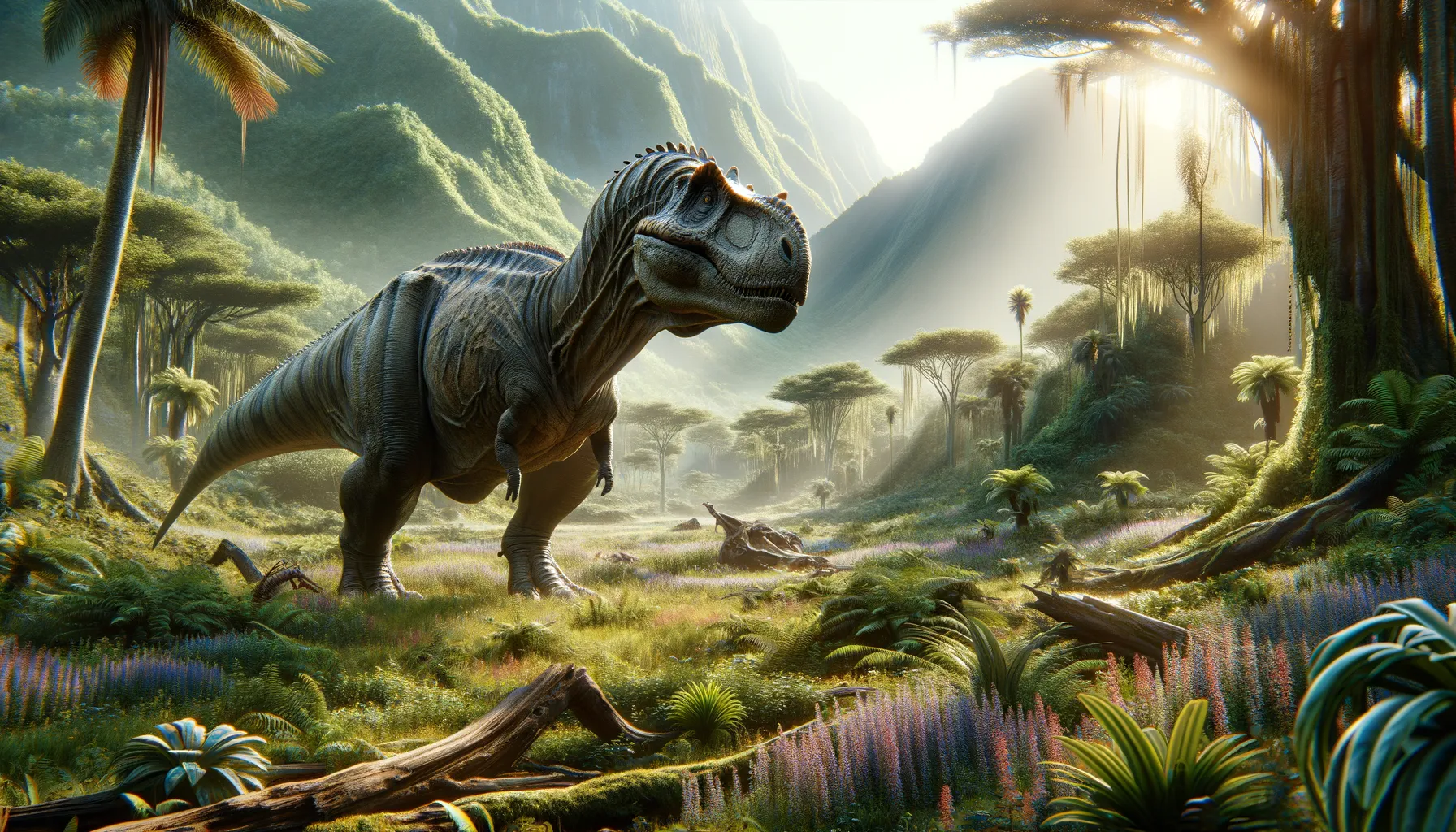
Pachysaurus
The thick-headed guardian of the plains!
Period
Cretaceous
Length
Can reach up to 8 meters long.
Height
Approximately 3 meters at the hips.
Weight
Around 2,000 to 3,000 kilograms.
Pachysaurus was a large herbivorous dinosaur known for its distinctive thick skull, which it likely used for defense and display purposes. It inhabited lush landscapes during the Cretaceous period, sharing its existence with other prehistoric creatures. Despite its size, Pachysaurus was a relatively social creature and may have lived in herds. The dinosaur's common occurrence in fossil records suggests that it was well adapted to its environment and was a significant part of its ecosystem.
Diet
Primarily a herbivore, Pachysaurus fed on a variety of plants available during its time. Its diet likely included ferns, cycads, and other low-lying vegetation. Occasionally, it might have consumed fruits or seeds when available.
Hunting
Not a predator, Pachysaurus relied on grazing and browsing for sustenance. It used its beak-like mouth to clip vegetation. Lacking claws and sharp teeth, it posed no hunting threat to other creatures.
Environmental challenges
Throughout the Cretaceous, Pachysaurus faced fluctuating climates which sometimes resulted in scarcity of food. Frequent volcanic activity could threaten its habitat with ash and alter local vegetation. Predation from larger carnivorous dinosaurs, such as theropods, posed a consistent threat to individuals separated from their herds. To cope, it developed a highly protective herd behavior, offering safety in numbers.
Speed
Moderate, similar to other medium-sized herbivores.
Lifespan
Estimated around 20 to 30 years.
First discovery
First discovered in the late 19th century.
Fun Facts
- Pachysaurus is known for its thick skull, which some scientists believe was used for head-butting contests to establish dominance or attract mates.
- Despite its fierce appearance, Pachysaurus was actually an herbivore, munching on the plants that were abundant during its time.
- Pachysaurus lived during the late Cretaceous period, sharing its environment with some of the last dinosaurs to walk the Earth before the mass extinction.
- Fossils of Pachysaurus have been primarily discovered in areas that were once part of Asia, giving clues to its ancient roaming grounds.
- The name 'Pachysaurus' comes from the Greek word 'pachy' meaning thick, referring to its distinctive skull, a defining feature of the species.
- Pachysaurus is a relatively lesser-known dinosaur, which makes any fossil discovery of it a thrilling event for paleontologists.
- Advancements in technology have allowed us to learn more about Pachysaurus' behavior by digitally reconstructing its skull to study impact forces.
Growth and Development
Pachysaurus experienced rapid growth during the early stages of its life, reaching most of its adult size within the first few years. Juveniles relied heavily on parental protection and the safety of the herd. Thickening of its skull and other distinctive features became more pronounced as the dinosaur aged, playing roles in defense and social behavior. This species likely experienced some molting, shedding older skin layers as it grew.
Habitat
Its habitats were primarily lush plains interspersed with forests, where it could find plenty of food. These environments offered both open spaces for movement and dense areas for protection. Seasonally, Pachysaurus might migrate alongside riverbanks to maintain access to water and fresh vegetation. It preferred regions that provided ample coverage to hide from predators.
Interaction with other species
Living alongside numerous other species, Pachysaurus had passive interactions with smaller herbivores, often sharing feeding grounds. It faced competition for resources, particularly during dry seasons. Predatory dinosaurs considered it a potential target, hence Pachysaurus built social strategies to defend itself. Displays of its thick skull were used to establish dominance within its groups and deter other dinosaurs.
Natural lifespan
Naturally, Pachysaurus lived up to three decades in favorable conditions.
Reproduction
Pachysaurus likely laid eggs in communal nesting sites, where several females grouped together for enhanced protection. Hatchlings were vulnerable and relied on the herd for safety against predators. Gradual development ensured most features were refined slowly, preparing them for adulthood. Adult males possibly engaged in head-butting contests during mating seasons to establish dominance.
Social behaviour
Pachysaurus exhibited social behaviors indicative of herd life, providing mutual protection and raising young collectively. Her bellowing and body language communicated effectively within groups. This behavior extended to cooperation against predators, potentially forming defensive circles around juveniles. Peers often instruct younger or weaker members on social standing and roles within the herd.
Fossil locations
Fossils of Pachysaurus have been predominantly found in North America, providing initial understanding of its existence. Additional specimens from other continents suggest the species may have had a wider geographical distribution. Excavations often yield well-preserved skulls due to their dense structure, important for understanding their defensive evolution. These fossils reveal adaptation patterns to different environments and climates.
